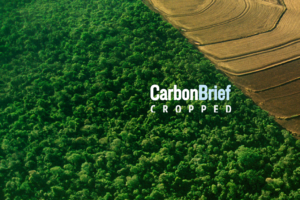
Interactive: Who wants what at the COP28 climate change summit
Multiple Authors
11.20.23Multiple Authors
20.11.2023 | 3:32pmAs a year ofrecord-breakingtemperatures and climate change-fuelleddisastersdraws to a close, nations are once again preparing to gather for another round of UN climate talks.
Several major international issues will be up for negotiation at COP28, which is taking place in Dubai, United Arab Emirates (UAE) between 30 November and 12 December.
A two-year “global stocktake” to assess progress under the Paris Agreement will reach its conclusion, with officials discussing how it should inform future action. COP28 is also meant to get a new fund for climate change-induced “loss and damage”up and running.
The event’s location in a major petrostate and the choice of Sultan Al Jaber – chief executive of the state-owned oil company – as president, have sparkedcontroversy.
Yet with fossil fuels under the spotlight, some nations willarguefor an agreement on phasing them out in the coming years. There will also be calls for other global targets, including tripling renewable energy capacity.
In order to keep track of what everyone wants to get out of COP28, Carbon Brief has conducted its annual assessment of priority issues for various parties, compiled into the interactive table below. This is based on publicly availablesubmissionsto the UN and wider research conducted by Carbon Brief.
The first column shows the countries and UNnegotiating blocs, the second column shows the topics up for debate and the third column indicates specific issues within those topics.
The final column indicates the position that each grouping is likely to take on a particular issue at the summit. This ranges from “high priority” – meaning the grouping is likely to be strongly pushing the issue – to “red line”, which means the grouping is likely to oppose this issue and show no room for compromise.
This is a living document that will be updated during the course of the summit. Please get in touch if you would like to offer additions to the table, by emailing[email protected].
Explanations of the overarching issues and jargon-filled language that permeates the talks can be found below the interactive table.
Global stocktake
The centrepiece of COP28 negotiations will be the conclusion of the global stocktake, under which nations have evaluated their progress towards the goals of theParis Agreement(seeCarbon Brief’s Q&Afor more information).
One key COP28 outcome will be a “decision” text concerning the stocktake. This is intended to reflect on efforts so far and lay out what parties agree should happen going forward.
Parties have submitted their views on what they expect from this document, reflecting their own priorities. Given the all-encompassing nature of the stocktake, these submissions are as varied as the COP negotiations themselves.
They include proposals for how countries should increase the ambition of their climate plans, known asnationally determined contributions(NDCs), to align them with the Paris Agreement’s 1.5C and well-below 2C warming target.
(As it stands, the stocktake has confirmed that countries must scale up both the ambition of their plans and their efforts to achieve them in order to meet the Paris goals.)
There are also proposals for how the stocktake should inform other aspects of UN negotiations, such as the global goal on adaptation and the new post-2025 climate finance target (see sections below).
In addition, the submissions provide an opportunity for nations to push for sector-specific targets that could help the world get on track for its climate goals.
These include some targets for global energy industries that have already gathered some momentum in the run-up to COP28 (see:Energy targets). However, they also include more country-specific preoccupations, such asRussia’sproposal that gas should be mentioned as a “transitional fuel” orAustralia’s全球低碳氢目标的建议。
Energy targets
Among the global stocktake submissions from parties are a handful of energy-sector targets that are likely to be a major focus at COP28. The UAE presidency has made “fast-tracking the energy transition and slashing emissions before 2030” one of its priorities for the event.
Perhaps chief among these proposals is the on-going discussion about phasing out or, at least, “phasing down” fossil fuels.
This topic has gained considerable traction since a mention of phasing down unabated coal power made it into the decision text atCOP26in 2021 – marking the first-ever COP decision targeting fossil fuels.
Support for a decision on phasing out all fossil fuels gained momentum at theCOP27summit in Sharm El-Sheikh, Egypt, in 2022, with around 80 countries getting on board. However, these efforts were ultimately unsuccessful.
The COP28 UAE presidency hasstatedthat “phasing down demand for, and supply of, all fossil fuels is inevitable and essential”.
Some parties have said they will prioritise a complete fossil-fuel phaseout, while others have emphasised a phaseout only of “unabated” fossil fuels or rejected the idea entirely. Still others have pushed more specific targets such as an end to coal or fossil-fuel subsidies.
At the same time, global momentum has gathered behind a call to triple global renewable capacity, which wasbackedby the G20 group of major economies in September.
The idea has beenpromotedby the International Energy Agency and adopted by the COP28 presidency, along with another call to double the rate of energy-efficiency improvements.
Loss and damage
Another major issue at COP28 will be the “operationalisation” of the loss-and-damage fund.
The decision to set up this fund, after decades of pressure from developing countries, was widely regarded as one of the main achievements from last year’sCOP27.
In the wake of the summit, a “transitional committee” of government officials from around the world was tasked with agreeing on a framework for the fund. This included deciding who should pay into it, who could draw money from it and where it would be based.
Over the following months, these negotiations revealed deep divides between developed and developing countries, which are reflected in Carbon Brief’s interactive table.
In particular, developing countries did not want the fund to be located at the US-dominated World Bank. They also wanted it to be accessible to all developing countries and primarily supported with grant-based finance from developed countries.
Meanwhile, developed countries wanted to ensure that the private sector, humanitarian groups and the wealthiest developing countries, such as China and Saudi Arabia, shared the burden of paying into the fund.
The transitional committee ultimately produced a draft framework that could be agreed at COP28. However, the USobjectedto the final outcome and the summit could see these issues reopened in negotiations.
Adaptation
Parties are also expected to adopt a framework for achieving the “global goal on adaptation” at COP28. Such a target was first set out in the Paris Agreement, but since then it has lacked a clear definition.
The process of “operationalising” the global goal is a priority for some developing countries, who argue that protecting people against the effects of climate change is given less attention than efforts to cut emissions.
Parties have laid out their visions for what the goal is and how progress towards it could be measured.
Finance is a central issue for adaptation, which tends to receive less funding overall than mitigation efforts. Some parties will likely push for references to a goal of doubling overall adaptation finance – first mentioned in the Glasgow Climate Pact that emerged fromCOP26– and look for ways to link adaptation outcomes with the findings of the global stocktake.
Finance
Climate finance is always an important issue at COPs. Developing countries needtrillionsin annual investments to carry out their climate plans and transition to low-carbon economies.
At theUN climate talksin Bonn earlier this year, some developing countries made it clear that they did not want to discuss cutting emissions unless there was an equal focus on financial support.
明年,将决定一个新的国家,post-2025 global goal for providing developing countries with climate finance. There is still no official confirmation that developed countries have met the outstanding $100bn-per-year climate finance goal that they were meant to achieve in 2020.
These issues will loom over the COP28 talks as nations prepare the groundwork for the new target and discuss climate finance in relation to the global stocktake.
Other issues
Two more “work programmes” will continue at COP28.
Themitigation work programme, which focuses on how countries can scale up emissions-cutting efforts, has had two “global dialogues” this year. They specifically addressed just energy transitions in the power and transport sectors.
A decision on this at COP28could helpto take forward some of the work of the global stocktake and mobilise investment opportunities.
Theotherwork programme on “just transition pathways” focuses specifically on how the objectives of the Paris Agreement can be achieved while ensuring a “just transition” for people around the world.
Countries will also continue with work to getArticle 6carbon markets up and running.
In particular, a “supervisory body” has been working onguidancefor how the Article 6.4 carbon market should operate. Nations will need to approve these rules at COP28.





